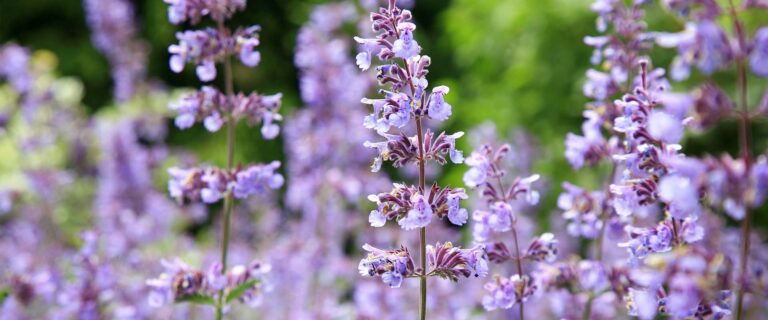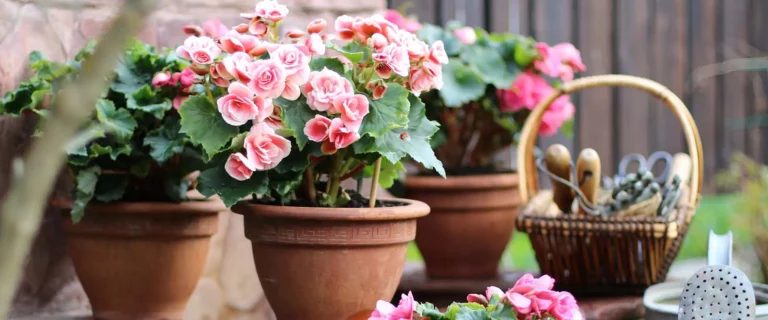So let’s talk about a native woody perennial… The hydrangea. Yep, you may not immediately think of a hydrangea when you think about native plants because most of the hydrangeas we typically grow are from Europe and Asia.
Introducing Hydrangea arborescens, commonly known as “smooth” hydrangea. According to Sean, our horticulture guru here at The Gardener’s Center, smooth hydrangeas are native to a large part of the eastern United States, from New York south to the panhandle of Florida, and west to the Oklahoma/Kansas area. Also, they’re prevalent in the Appalachian Mountains. (And because plants don’t recognize state borders, we’re just fine calling it a native here in Connecticut.)
Pinky Pollen Ring Hydrangea
Could there be a cuter name? Pinky Pollen Ring hydrangea, a relatively new plant in the American Beauties Native Plants ® line, is what smooth hydrangeas look like if you were to stumble upon one in nature.
It has the lacecap flowers and is a tremendous source of pollen for bees and butterflies during the summer months. These perennials are subtly gorgeous and bloom for a very long time, with stalks that are not going to flop over.
Annabelle Hydrangea
Annabelle hydrangea, while the most popular of the smooth hydrangeas with the more familiar mophead flowers, doesn’t bring as much to the pollen party, and came about because of a mutation.
Very often in the plant world, a plant will naturally mutate; a lot of our variegated plants come about in that way, where all of a sudden we have a green and white leaf or a green and yellow leaf. Many times, a plant’s flower will change color or form, and that’s what happened with Annabelle with its big, snowball flowers.
The backstory of how Annabelle came about combines two of Sean’s favorite things: plants and history.
This hydrangea was discovered by Harriet Kirkpatrick in 1910 in Anna, Illinois. Harriet came from a well-to-do family, so she was no stranger to gardening. She and her friends were into ornamental plants and gardening, and as Harriet was out riding her horse one day, she noticed a stand of smooth hydrangeas that had the snowball flowers rather than the lacecap flowers. So she did what any passionate gardener would do… She dug one up and planted it in her yard. She grew it and observed it for a few years, and began to share it with her friends.
A few years later, Harriet approached a national seed company about introducing it into commercial production for sale; unfortunately, they passed on it. So the ladies continued growing it in Illinois.
Fast forward to the late ‘50s-early ‘60s, when Doctor Joseph McDaniel, a professor of Horticulture at the University of Illinois, discovered the plant being grown all over town and was blown away by it. (Sean’s words!)
It was he who then propagated it and introduced it into production, and that’s when Annabelle became available commercially. He originally wanted to call it Ballerina, but instead called it Annabelle, in a nod to the town of Anna, and the ladies who discovered it and grew it.
Native Hydrangeas Are Easy to Care For
If you’ve had experience with the non-native blue or the pink mophead hydrangeas, you know they can sometimes be a challenge. They’re very thirsty plants, they don’t do very well in full sun, or in the heat of the summer. If you prune them at the wrong time or if they die back too much in the winter, you might not get flowers.
Smooth hydrangea are the opposite of challenging. They are probably the easiest hydrangea to grow… Sean says, yes, they can handle full sun, plus, you can cut them down to the ground every year, so you don’t have to worry about pruning them at the wrong time or them dying back.
Pro tip:
Not only can you, but you SHOULD cut your smooth hydrangeas back to about four to six inches above the ground every year. They ONLY flower on new growth, and the more new growth you stimulate, the more flowers you’re going to get.
On top of that, if you don’t prune them back, they’ll get long and lanky and leggy, and turn into a hot mess. A great time to cut them back is between Thanksgiving and Christmas.
While they’re so easy to grow, you might want to keep those beautiful Annabelle mopheads from flopping over after a heavy rain with something called a plant cradle. They’re easy to place around the plant and don’t distract from it like stakes and twine might.
So give these smooth hydrangeas a try if you don’t have one (or more) already.









